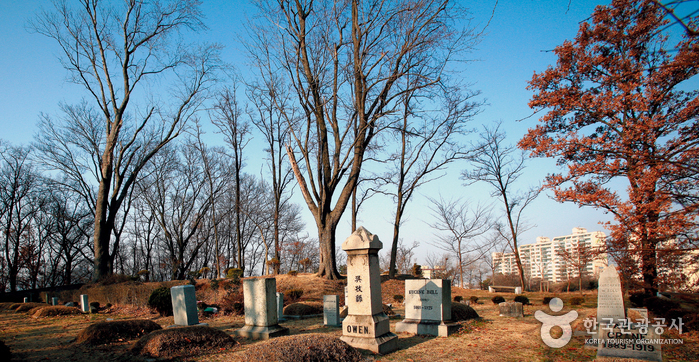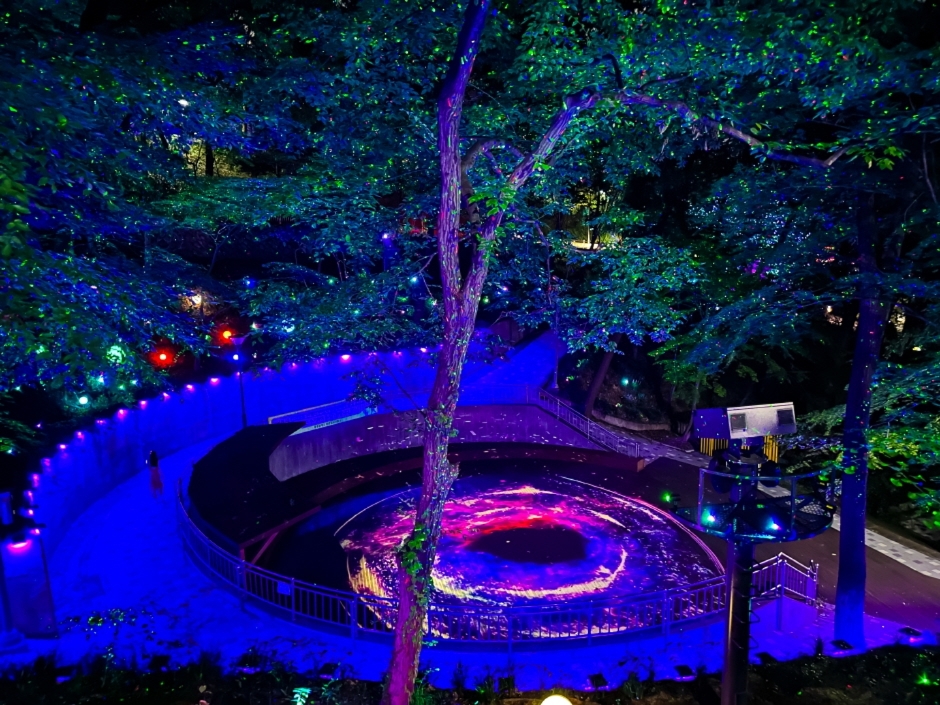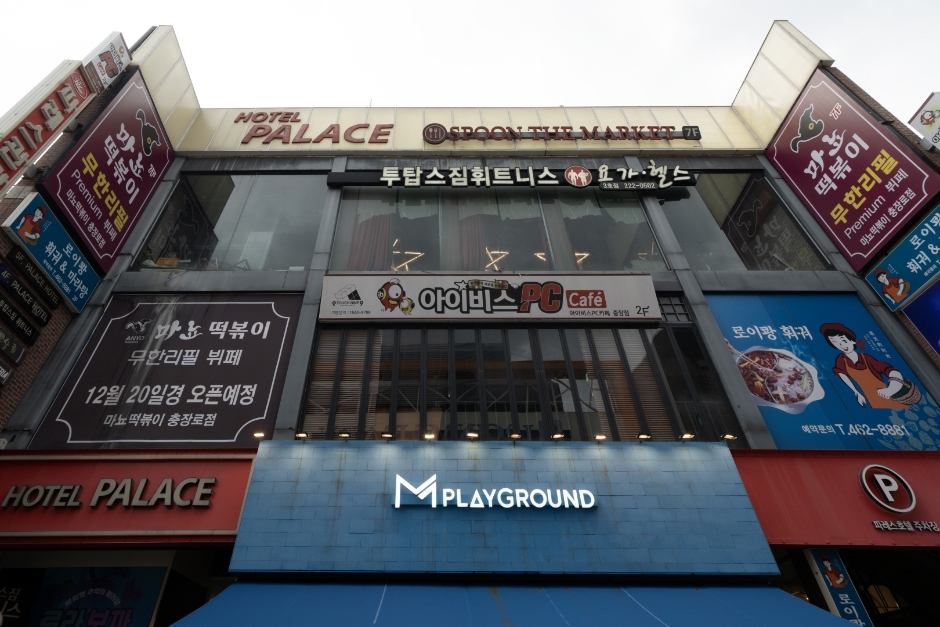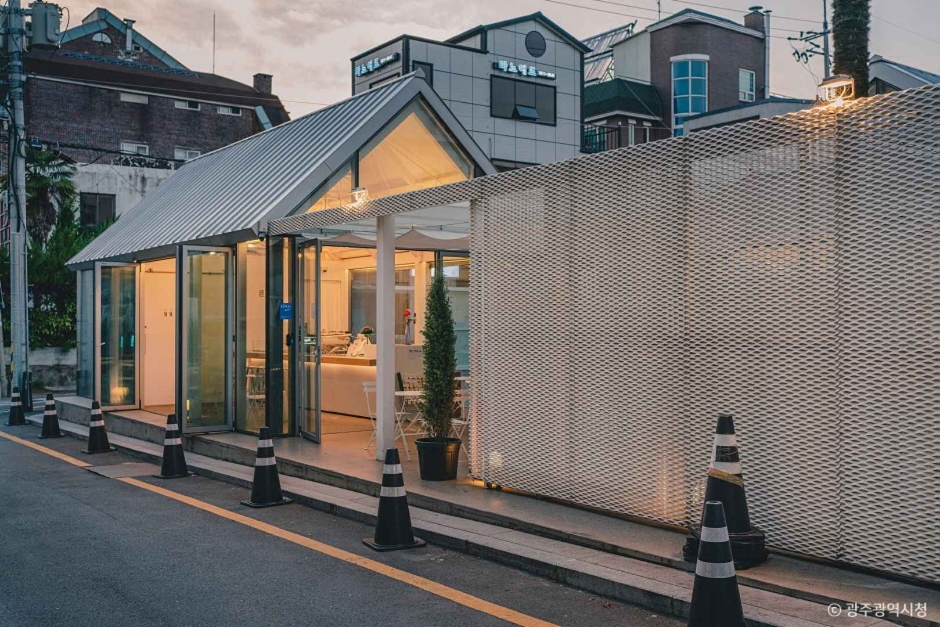ABC-Mart - Gwangju Chungjang-ro Branch [Tax Refund Shop] (ABC마트 GS광주충장로)
3.4Km 2024-04-16
GS Gwangju Chungjang-ro Branch, 83, Chungjang-ro, Dong-gu, Gwangju
-
Yangnim-dong Missionary Cemetery (양림동 선교사 묘지)
3.4Km 2021-05-28
77, Jejung-ro, Nam-gu, Gwangju
+82-62-607-2333
The Yangnim-dong Missionary Cemetery is the final resting place of 23 missionaries who brought Christianity to Gwangju and led the movement to free the nation from under Japanese colonial rule. Yangnim-dong in Gwangju Metropolitan City was the main area in which Priest Bae Yu-ji and Dr. Clement Owen carried out their work as the first missionaries to Jeollanam-do.
Located nearby is a monument dedicated to Priest Bae Yu-ji and the Owen Memorial Building, built in honor of Dr. Owen and his grandfather. Both memorials are cultural assets and particularly prized by locals of the Christian faith.
MLB - Chungjang-ro Branch [Tax Refund Shop] (엠엘비 충장로점)
3.4Km 2024-04-16
82-2, Chungjang-ro, Dong-gu, Gwangju
-
Sajik Forest of Light (사직 빛의 숲)
3.5Km 2024-12-11
49 Sajik-gil, Nam-gu, Gwangju
Located within Sajik Park, the Forest of Light is a popular night view spot with a fantastic media art that incorporates historical themes of Gwangju. The space features a combination of lighting, video, and music to create multimedia contents, offering a variety of experiences and attractions through interactive art that responds to people's movements. The observation tower hosts a light show, and visitors can enjoy video contents through an AR telescope.
Ej Ost - Chungjang-ro (No. 2) Branch [Tax Refund Shop] (EJ OST 충장로2호)
3.5Km 2024-04-17
80-3, Chungjang-ro, Dong-gu, Gwangju
-
Yangnim History & Culture Village (양림역사문화마을)
3.5Km 2023-11-28
7 Seoseopyeong-gil, Nam-gu, Gwangju
+82-62-676-4486
Yangnim History & Culture Village is located in the area where Western items and ideas first entered Gwangju over 100 years ago. As such, the neighborhood has a unique collection of Western architecture mixed with traditional hanok houses. There are also many houses of Christian missionaries, who facilitated the advancement of medicine and education in Gwangju. Some areas, such as Penguin Village, have been decorated with murals and outdoor exhibitions to promote art and tourism, helping the elderly locals to make a living.
May 18 Democratic Uprising Archives (5•18민주화운동 기록관)
3.5Km 2024-01-03
221 Geumnam-ro, Dong-gu, Gwangju
The May 18 Democratization Movement was a righteous uprising by citizens that took place in Gwangju for ten days from May 18 to 27 in 1980. The May 18 Democratic Uprising Archives was established in 2015 at the former Gwangju Catholic Center, a historical site of May 1980, to systematically collect and preserve the May 18 Democratization Movement's heritage that led to the democracy in Korea today. Through the efforts of Gwangju citizens, visitors can see the original records of the May 18 Democratization Movement, inscribed on the UNESCO Memory of the World in 2011. Visitors can also view the records with a guide or through online exhibitions. The May 18 Democratic Uprising Archives is a place that preserves the history of all Korean citizens.
S-Market - Gwangju Chungjang-ro Branch [Tax Refund Shop] (에스마켓 광주충장로)
3.5Km 2024-04-18
73, Chungjang-ro, Dong-gu, Gwangju
-
Palace Tourist Hotel (파레스 관광호텔)
3.5Km 2025-08-18
13, Jungang-ro 160beon-gil, Dong-gu, Gwangju
+82-62-222-2525
Palace Tourist Hotel is located only a six-minute walk from Geumnamro 4(sa)-ga Station on Gwangju Subway Line 1. Nearby attractions within walking distance include Gwangju Art Street and Yangdong Market.
Dongnidan-gil Cafe Street (동리단길 카페거리)
3.6Km 2025-08-06
Dongmyeong-dong, Dong-gu, Gwangju
Dongridan-gil Cafe Street, once an affluent neighborhood filled with opulent homes and traditional hanok houses, is now a popular attraction in Gwangju. The street is lined with various cafes, each boasting its own unique menu and interior, perfect for those seeking unique menus and picture-worthy spots. Surrounding the Cafe Street, there are many parks, wall murals, and art installations, making it an ideal place for a leisurely stroll or a relaxing break.
![ABC-Mart - Gwangju Chungjang-ro Branch [Tax Refund Shop] (ABC마트 GS광주충장로)](http://tong.visitkorea.or.kr/cms/resource/83/2886883_image2_1.jpg)

![MLB - Chungjang-ro Branch [Tax Refund Shop] (엠엘비 충장로점)](http://tong.visitkorea.or.kr/cms/resource/00/2886900_image2_1.jpg)

![Ej Ost - Chungjang-ro (No. 2) Branch [Tax Refund Shop] (EJ OST 충장로2호)](http://tong.visitkorea.or.kr/cms/resource/96/2886896_image2_1.jpg)

![S-Market - Gwangju Chungjang-ro Branch [Tax Refund Shop] (에스마켓 광주충장로)](http://tong.visitkorea.or.kr/cms/resource/68/2886868_image2_1.jpg)


 English
English
 한국어
한국어 日本語
日本語 中文(简体)
中文(简体) Deutsch
Deutsch Français
Français Español
Español Русский
Русский